A lot has happened on Paris’s transport system this year. In the summer, I took some time to check it all out. Fresh from my visit to the RER E’s western extension – which I wrote about last time – I headed east to explore the latest on metro line 11.
Line 11 of the Paris metro opened in 1935 between Châtelet and Porte des Lilas. The latter is on the city’s eastern edge, while Châtelet is right in the centre. Its last extension was just two years after opening, one stop east to Mairie des Lilas. This left it as the shortest – and least-used – of the network’s “main” lines1. But in June 2024, it almost doubled in length, with six new stations in the east, leading to a new terminus at Rosny – Bois-Perrier.

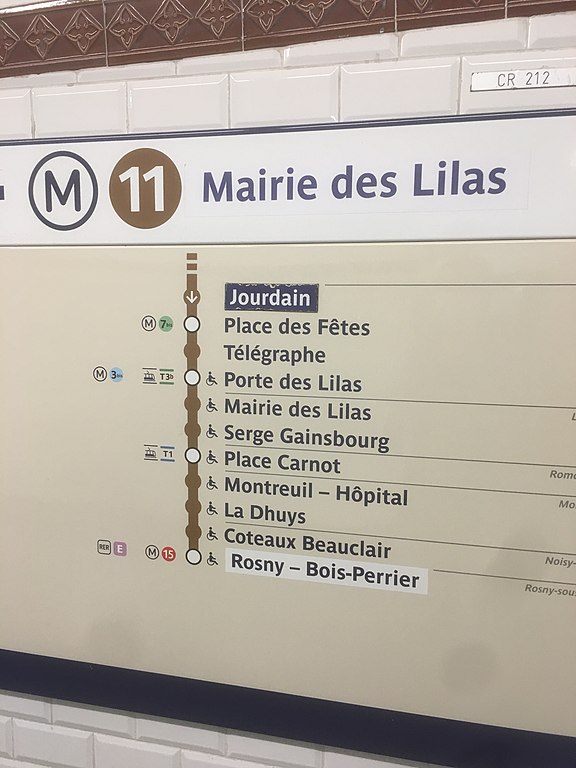
Getting there from Porte Maillot, where I had been exploring the RER extension, should have been easy enough: Rosny – Bois-Perrier is on the RER E. With the RER only operating as a shuttle west of Magenta, I had to transfer there; but that was a simple, cross-platform affair. On the other hand, as an inhabitant of central Paris – accustomed to the simplicity of the metro – I hadn’t bargained for the fact not all trains stop at every station. It wasn’t until I was one stop beyond that I realised my train wasn’t calling at Rosny – Bois-Perrier. Maybe that’s something that should change now it’s a metro terminus.
After doubling back, I had to exit the station to make the connection to the 11. But it was a short, unencumbered walk. Unlike the vast majority of legacy metro stations, but like most of this extension’s new ones, there is a sizeable surface building. From the outside, it looks fine. Not spectacular like some of the stations currently under construction for line 15; but I have no particular complaints.

Inside, there’s a large, empty hall. This could easily have looked bland and cold, but the ceiling design does a lot here to prevent that. Perhaps the best feature – very rare on the Paris metro – is the self-cleaning toilet. Let’s hope it’s well looked after.
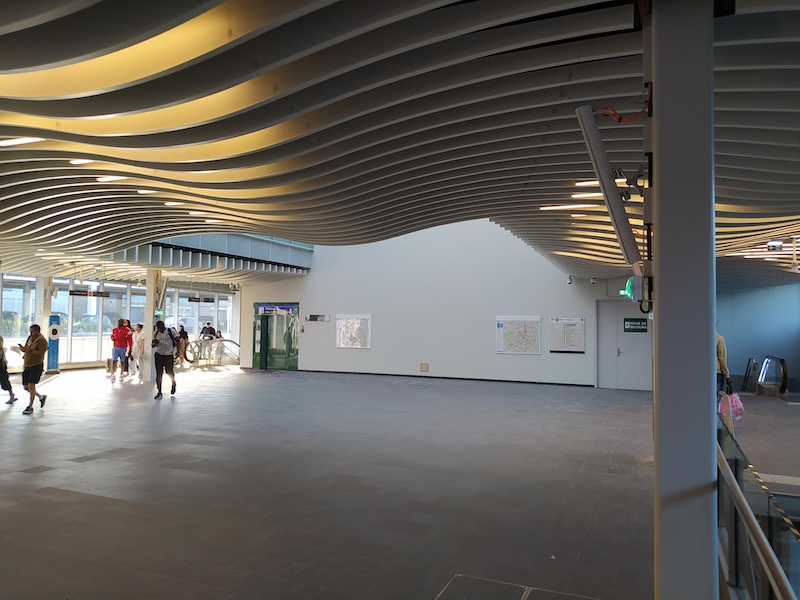
At platform level, it’s a fairly typical Paris metro station, both in terms of design and dimensions. The white tiles and round seats are familiar from across the network.
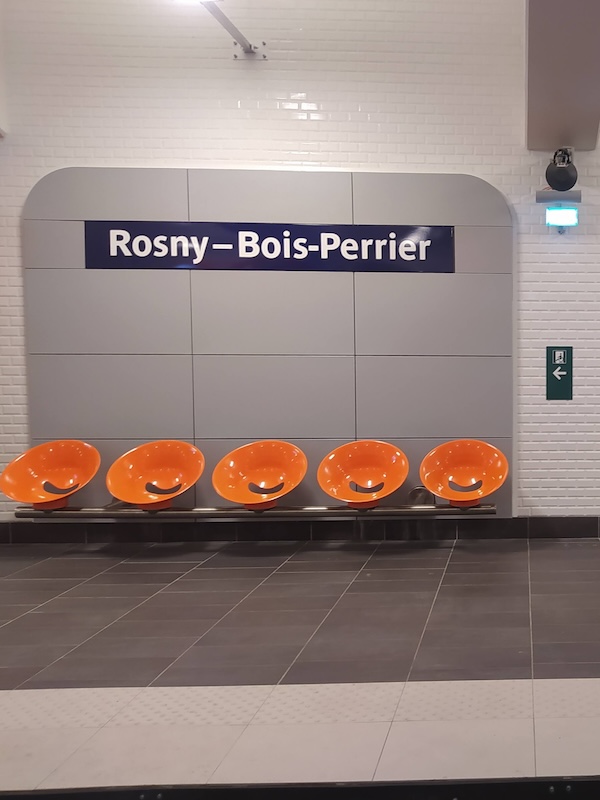
I rode one stop to the extension’s standout station: Coteaux Beauclair. Here, the line curves south to serve a park and a major shopping centre, along with parts of the towns of Rosny-sous-Bois and Noisy-le-Sec. For a brief section which includes the station, it runs as an elevated line. The design here is spectacular, resembling the original aerial lines in central Paris (lines 2 and 6), but also looking thoroughly original. From the sleek pylons to the gentle curves, it’s rightly been hailed as this project’s most beautiful element.

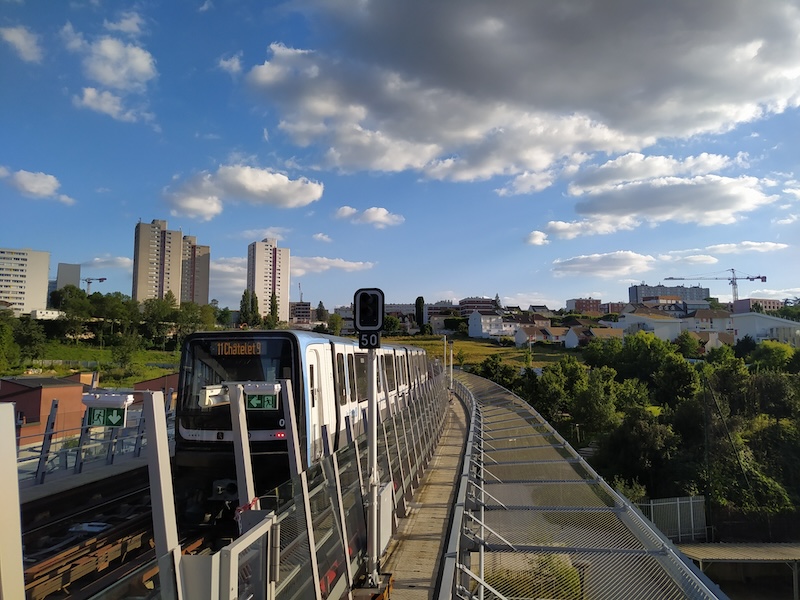
That said, when I went down to see the station from ground level, I was surprised to find myself taking stairs. Most of the elevated stations in Paris are fitted with escalators, but not Coteaux Beauclair. Since wheelchair accessibility is legally required on all new sections of the metro, there are lifts. But what about the accessibility benefits of escalators? Not everyone who can’t use stairs needs an elevator. Many find lengthy staircases daunting: should we really funnel them all to the queue for the lift?
Despite the climb back up, I was glad to have gone down to ground level to see how the station looks from there.
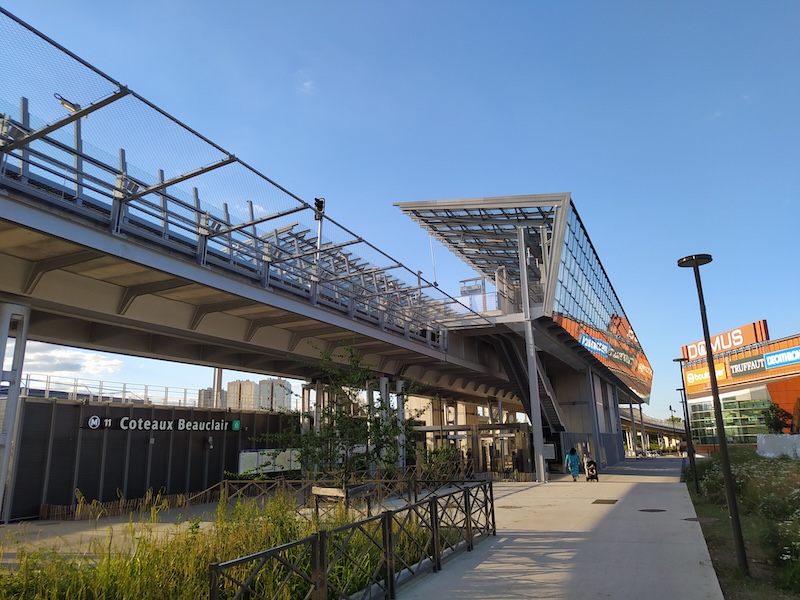
The “M” mast provides visual coherence with other new stations. The Paris metro’s entrances, which are often nothing more than a hole in the ground with a staircase, feature various sign designs. This is the current iteration, also seen on other recent extensions.
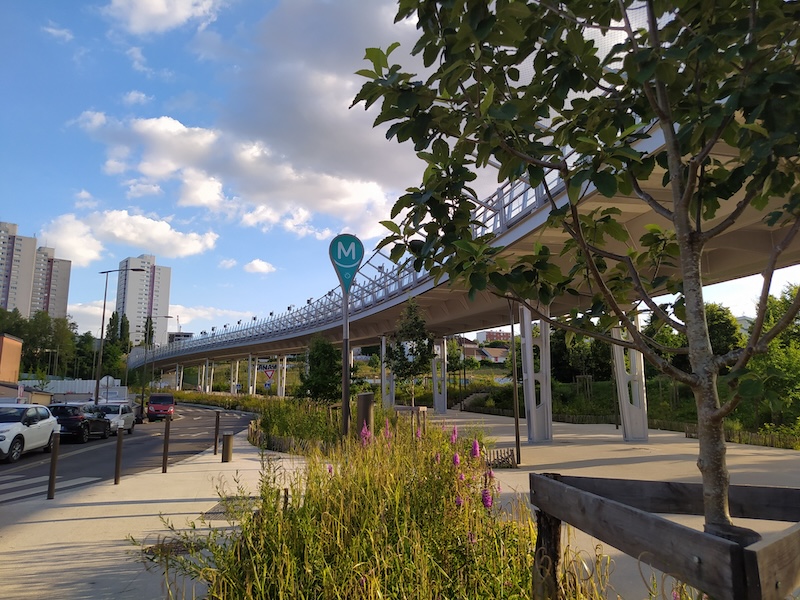
One of the risks with elevated rail is the dark spaces it can create on the ground. But the choice of steel over concrete and the leanness of the supports mean there isn’t much of a shadow here. The pale street surface helps, too. The overall effect is light and airy, rather than dark and scary.
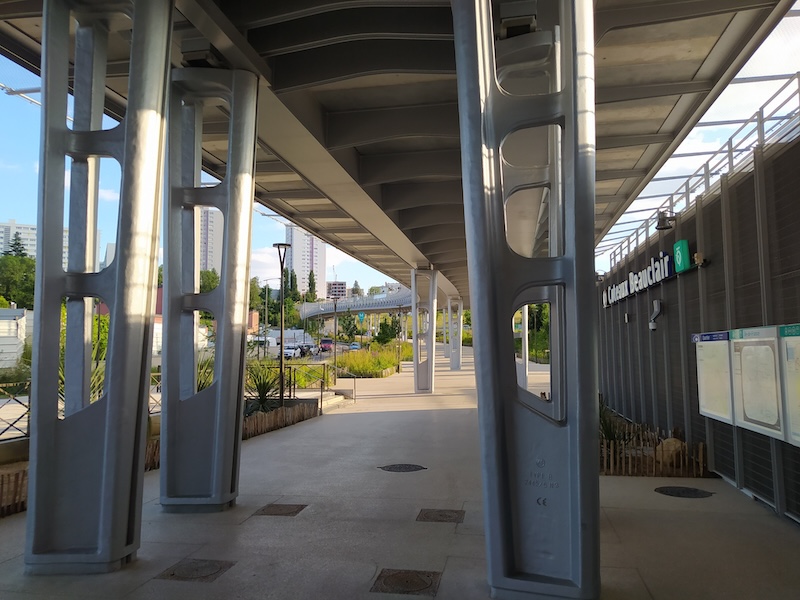
I didn’t have time to stop at every station, but I did jump out at Serge Gainsbourg, named in honour of the singer-songwriter behind “Le poinçonneur des Lilas” – “The ticket inspector of Les Lilas”. If a station had to be named in honour of the singer, it made sense to do it here in Les Lilas. But not everyone agreed he should be given such an honour2.
Recent extensions to lines 4 and 12 were criticised for their lacklustre designs, particularly at platform level. On line 11, designers have made two welcome modifications to the “white box” model followed there. Dark grey has been added to the colour scheme, and a subtle curve has been added to the shape. The network’s signature white tiles, bordered with a green trim, make sure you know you’re on the Paris metro.
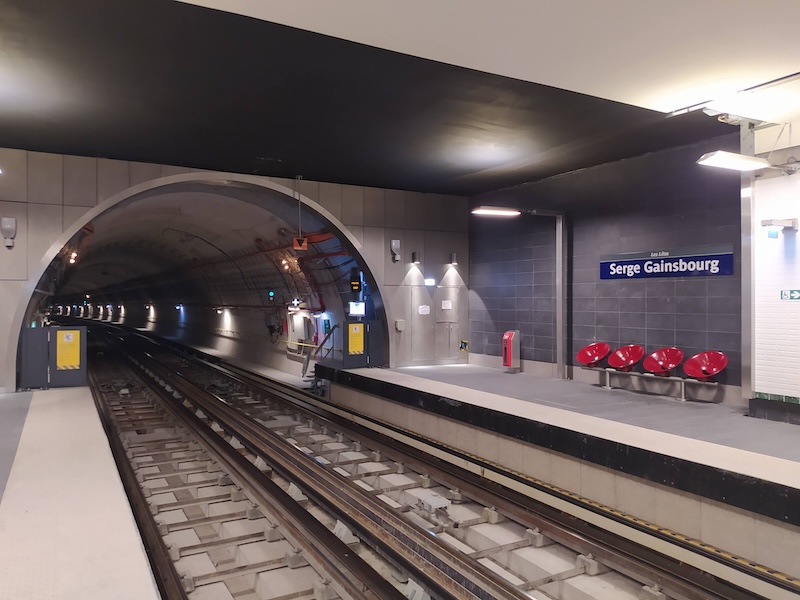
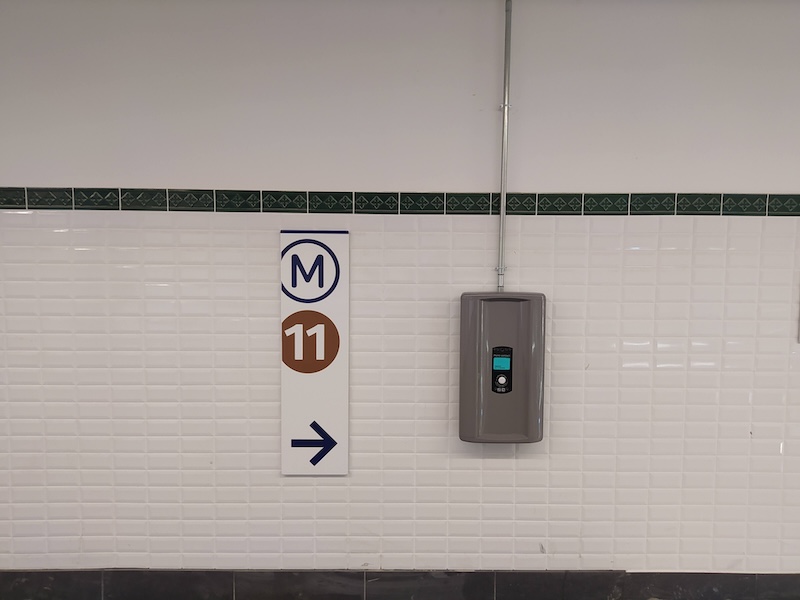
Above the platforms, one gets the sense the designers couldn’t afford a colour printer. There are plenty of shades of grey, but not much else.
Stepping outside, the entire area was still under construction, making it difficult to get a sense of the finished product. The entrances I saw featured the same mast as at Coteaux Beauclair, along with curved railings subtly reminiscent of Hector Guimard’s classic originals. This design has already been used at other recent stations.

Satisfied, I boarded another train towards Châtelet and collected my thoughts. This extension is a game changer for residents of the suburbs it serves, offering fast, frequent access to the city centre on brand-new walk-through trains. As for the look and feel of the stations themselves: the aerial section is magnificent, while the rest of the extension is modern and functional, albeit without much in the way of “wow” factor.
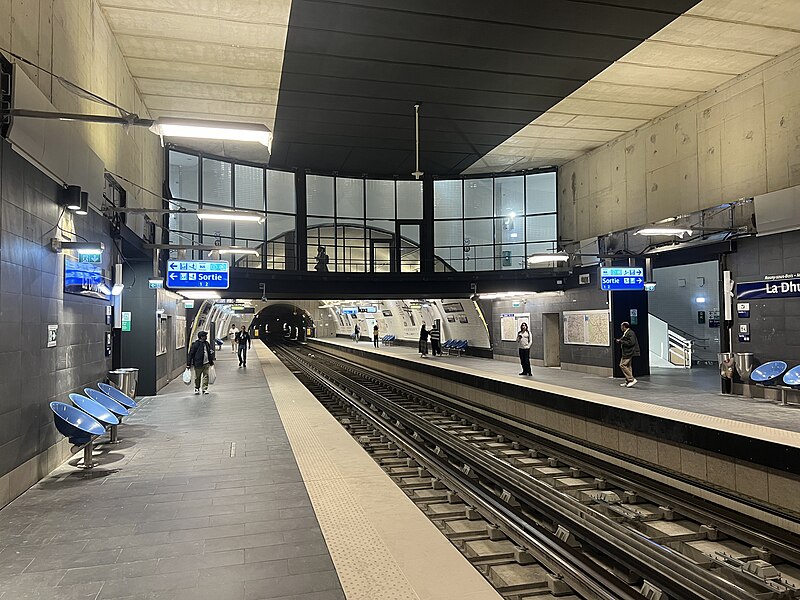
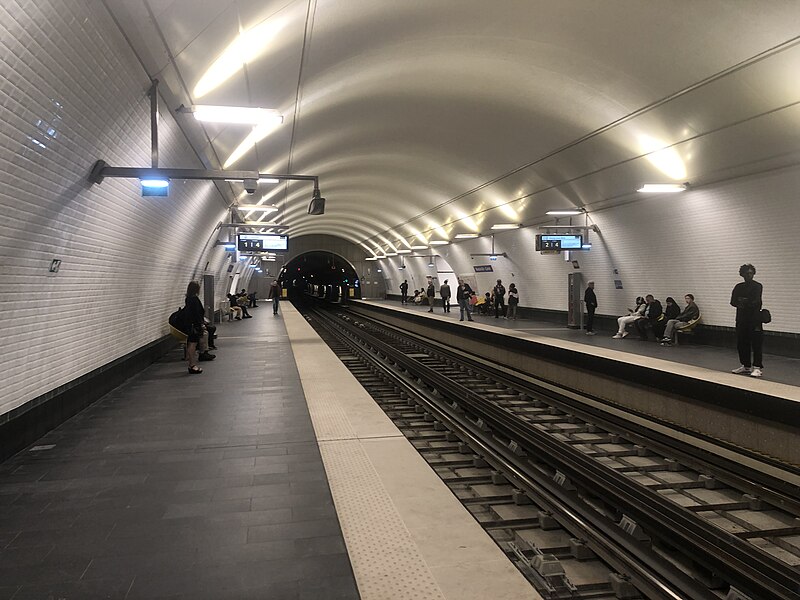
My next adventure would take me somewhere very special: a mega extension of line 14, bringing driverless trains deep into the Parisian periphery. Of huge importance in its own right, it also presages the developments coming in the next few years. This extension is the first stage of the Grand Paris Express, a plan to literally double the length of metro track in the region. Come back next time to find out more.
-
Excluding lines 3 bis and 7 bis, stubs associated with other lines. The footfall figures group these with the 3 and 7 respectively. ↩
-
Among the many criticisms: one of Gainsbourg’s best-known songs is “Lemon Incest”, about the singer’s relationship with his daughter Charlotte, then 12 or 13. According to the song’s Wikipedia page, “Charlotte and Serge routinely denied the song, whose title is ‘Lemon Incest’, is about incest”. ↩
 Fabric of Paris
Fabric of Paris